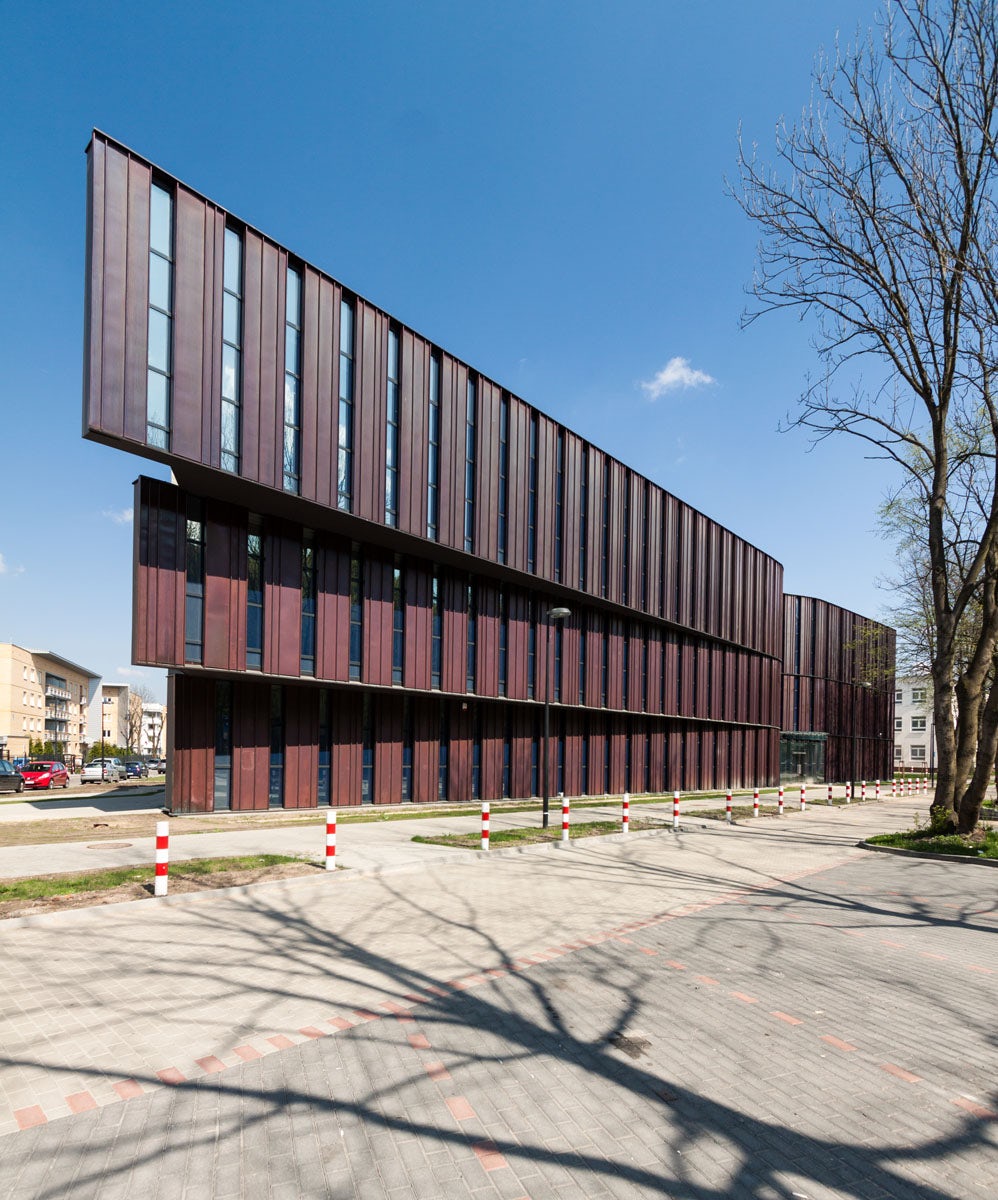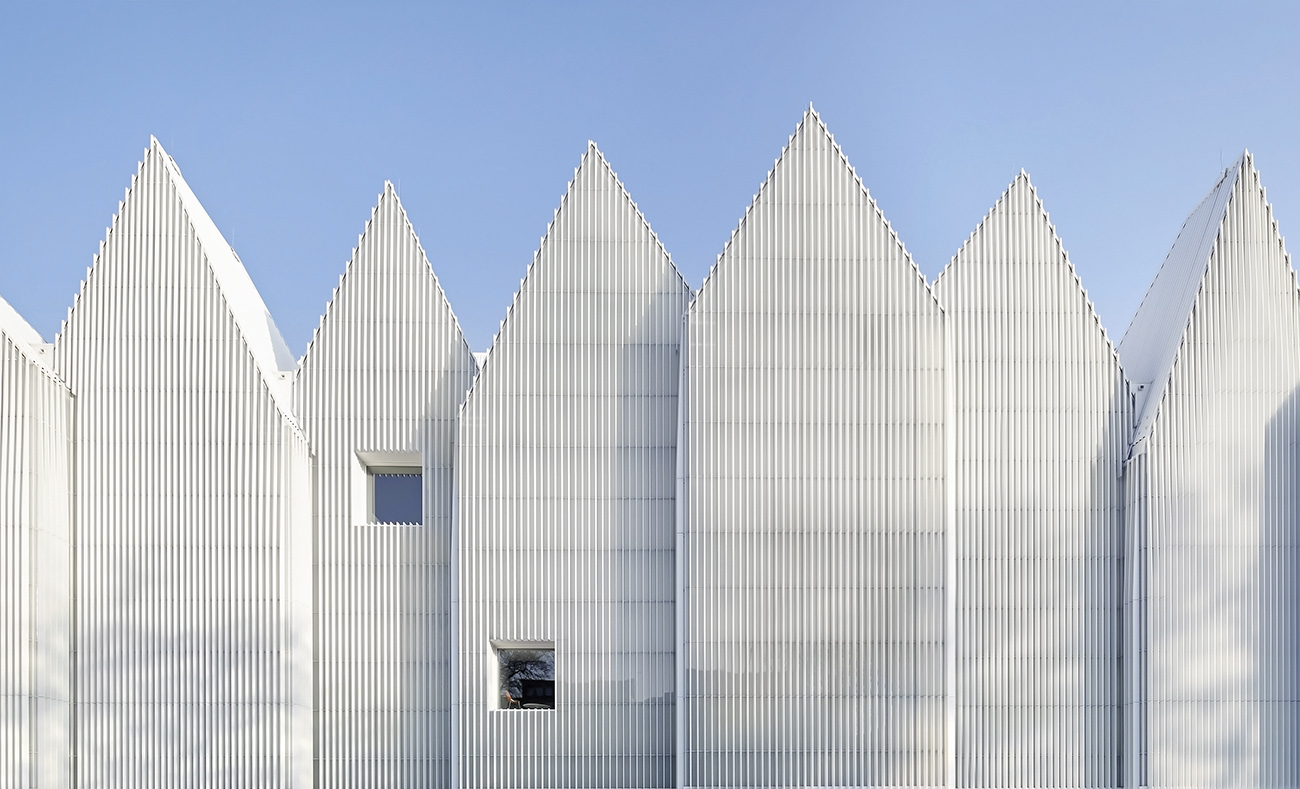Architects: Showcase your next project through Architizer and sign up for our inspirational newsletter.
A nation’s identity is intimately tied to its physical environment. Through ever-changing economics, political reform and social movements, it is cities that shape and reflect our shared values. Few places does the built environment illustrate radical cultural transformation like in Poland. Forged through a complex and tumultuous history, Polish architecture has risen amongst wartime destruction, shifting national boundaries and a long journey to independence. Juxtaposing traditional constructions with rapidly built modern projects, the country’s future continues to evolve alongside its architecture.
Emerging from centuries of territorial seizures, the interbellum period and a communist regime, Poland began actively transforming its economy within the last two decades. This has had serious impacts to its building industry, where European funds have now begun stimulating the construction market. New civic and public-use designs are being created at an unprecedented pace throughout Poland, projects backed by subsidies in an impressive building boom. Never before has the country created so many cultural projects within such a short time, from concert halls and museums to higher education facilities.
The following collection takes a closer look at Poland’s cultural projects and the different ways these buildings are reshaping the country’s identity. Created alongside historic structures and past symbols of power, these new buildings balance existing conditions while exploring a contemporary design language. Monumental and meticulously crafted, the projects begin to reveal how Poland is building a new identity for its future.

© Krzysztof Sokołowski

© Wojciech Radwański
International Congress Centre Katowice by JEMS Architekci, Katowice, Poland
Located near the Spodek arena, the Katowice Centre was built to embrace the social space of the city. A distinct form was integrated with public space to link the city’s oldest historic district and a key urban axis. The links were designed as public passageways and routes over the building roof.


Museum of the History of Polish Jews by Lahdelma & Mahlamäki Architects, Warsaw, Poland
This new museum project was created as a multifunctional center for Jewish heritage, culture and education. Inspired by legends of the Old Testament, the design refers to the abstract and universal phenomena of nature. The project was created alongside a memorial of the uprising in the Jewish ghetto, a major element in the architecture of the museum.

© Ingarden & Ewy Architects

© Ingarden & Ewy Architects
ICE Krakow Congress Centre by Ingarden & Ewy Architects, Kraków, Poland
Formed as a gate to the city of Kraków and its modern developments, this new building is dedicated to cultural events. Made with three main halls, the project embraces music, theater, ballet and larger gatherings. A system of mobile partitions was designed to allow different configurations of conference space, as well as ancillary rooms and commercial areas.

© Wojciech Krynski

© Wojciech Krynski
Cricoteka Museum of Tadeusz Kantor by NSMOONSTUDIO and WIZJA architectural office, Kraków, Poland
Designed as a venue and stage for art and performance, the Center of Documentation of the Art of Tadeusz Kantor, “CRICOTEKA,” was made to engage the public through flowing interior and exterior space. Formally breaking away from conventions, the project embraces the Vistula river and its banks as a backdrop and grounds for creative use.

© Ingarden & Ewy Architects

© Ingarden & Ewy Architects
Malopolska Garden of Arts by Ingarden & Ewy Architects, Kraków, Poland
The Malopolska Garden of Arts was created to house both the Juliusz Słowacki Theatre and the Malopolska Voivodeship Library. Establishing a new identity for the arts scene in Kraków, the project features a dynamic screen that defines theatric space and introduces a new spatial order to the surrounding ruined buildings.

© Fotografia Maciej Lulko

© Mariusz Lis
ICHOT Gate of Poznan by Ad Artis Architects, Poznań, Poland
Sited in the historic area of Poznań where Polish christianity and statehood have their origins, this project aimed to combine the new with the old. Contrasting its surrounding urban fabric with a simple, unornamented form, the building was made with glass, concrete and stark cut steel. The structure becomes a pentaprism for viewing the history of the site.

© Iñigo Bujedo Aguirre Photography

© Iñigo Bujedo Aguirre Photography
Silesian Museum by Riegler Riewe Architekten, Katowice, Poland
The Silesian Museum was designed around elements of heavy industry and mining that form the cultural identity of Katowice. Forming a project in a central location within one of the future growth regions of Europe, the design explores post-industrial re-use and sustainability. Recalling the previous functions of the site, the museum is located largely underground, while abstract glass cubes were used to blend with the existing buildings.

© Marcin Czechowicz

© Marcin Czechowicz
Extension and Refurbishment of the Main Train Station In Wroclaw by Grupa 5 Architekci, Wroclaw, Poland
This renovation project involved the extension of the train platforms, a new public plaza and the refurbishment of the historic main station. Various landscape elements combine with a large, open surface outside the station, while interior spaces were revived in close cooperation with the conservation authority.

© Bogdan Pszonak

© Bogdan Pszonak
Lecture and Performance Hall for Faculty of Pedagogy and Psychology by Meteor Architects, Bialystok, Poland
Referencing the Zwierzyniecki Forest through its sections, this lecture and performance hall is sited at the corner of a street in Bialystok. Copper and gray concrete bricks were combined to define the building’s various façades, while soundproof mobile walls allow different interior layouts.

© Barozzi / Veiga

© Barozzi / Veiga
Philharmonic Hall by Barozzi Veiga, Szczecin, Poland
Barozzi Veiga’s Philharmonic Hall stands as an elegant edifice emerging from an urban context of heavy classicist buildings, stacked residences and monumental neo-Gothic churches. Designed with a geometry that balances mass and verticality, the project was clad in glass as a sculptural object in contrast with its surroundings.
Architects: Showcase your next project through Architizer and sign up for our inspirational newsletter.









